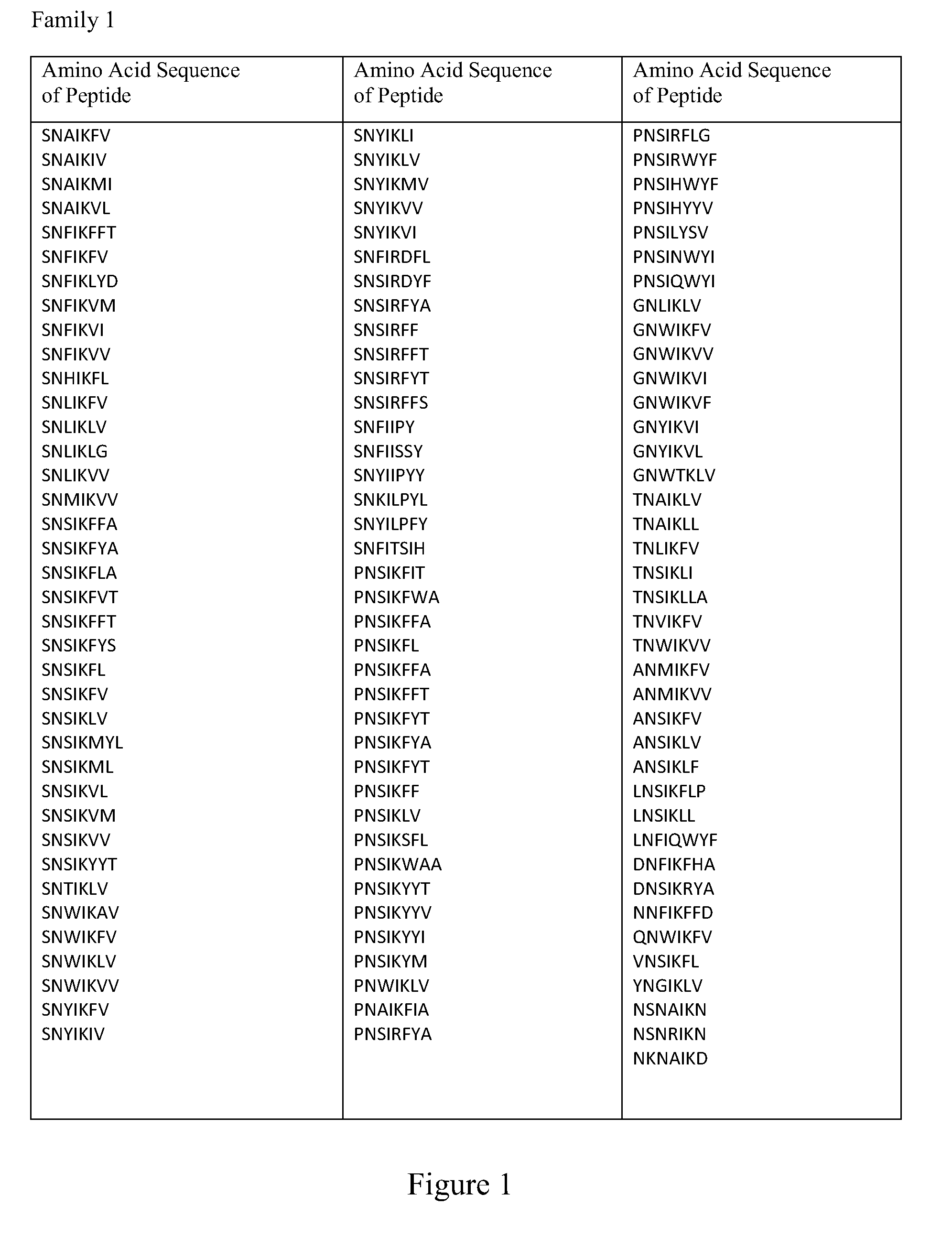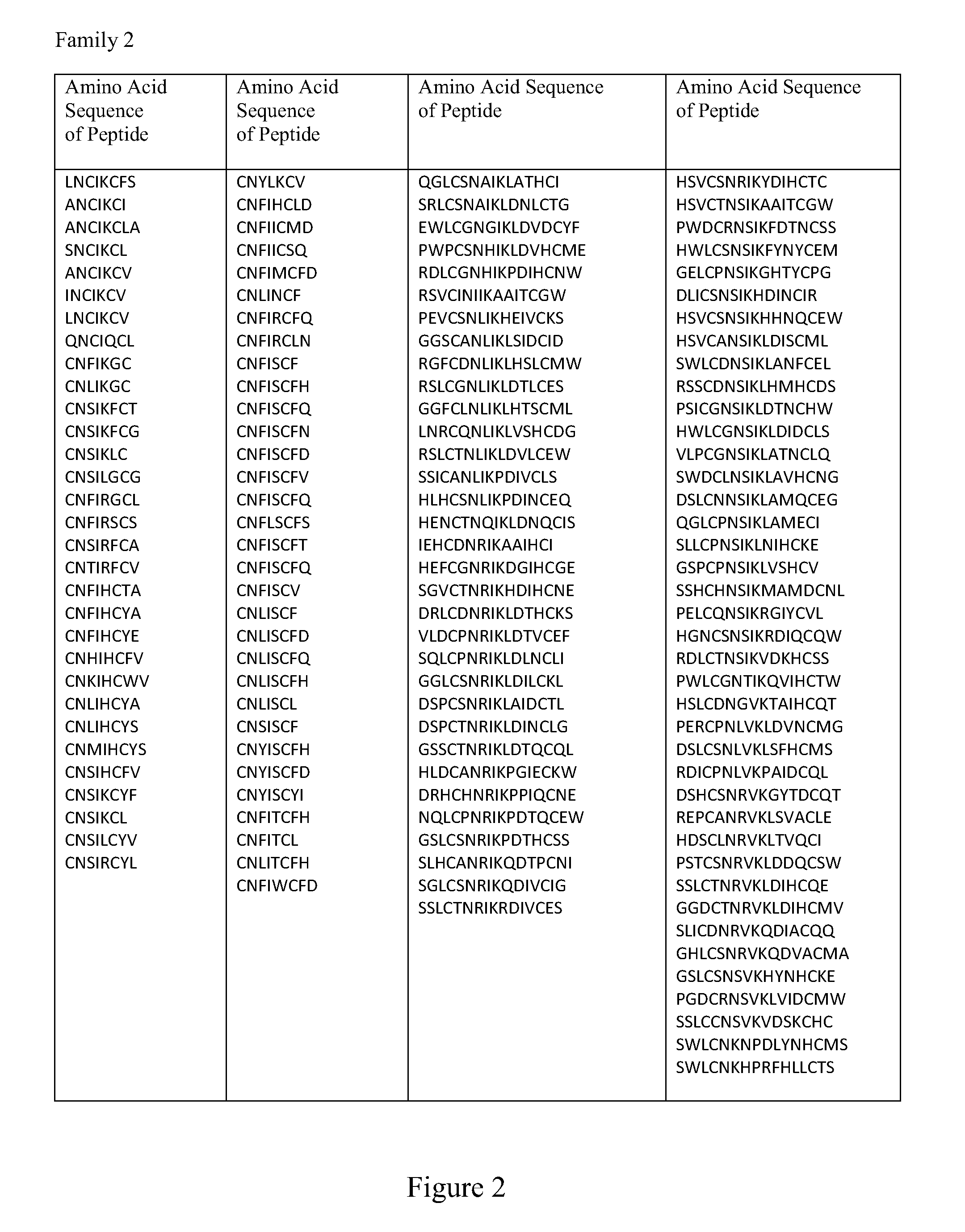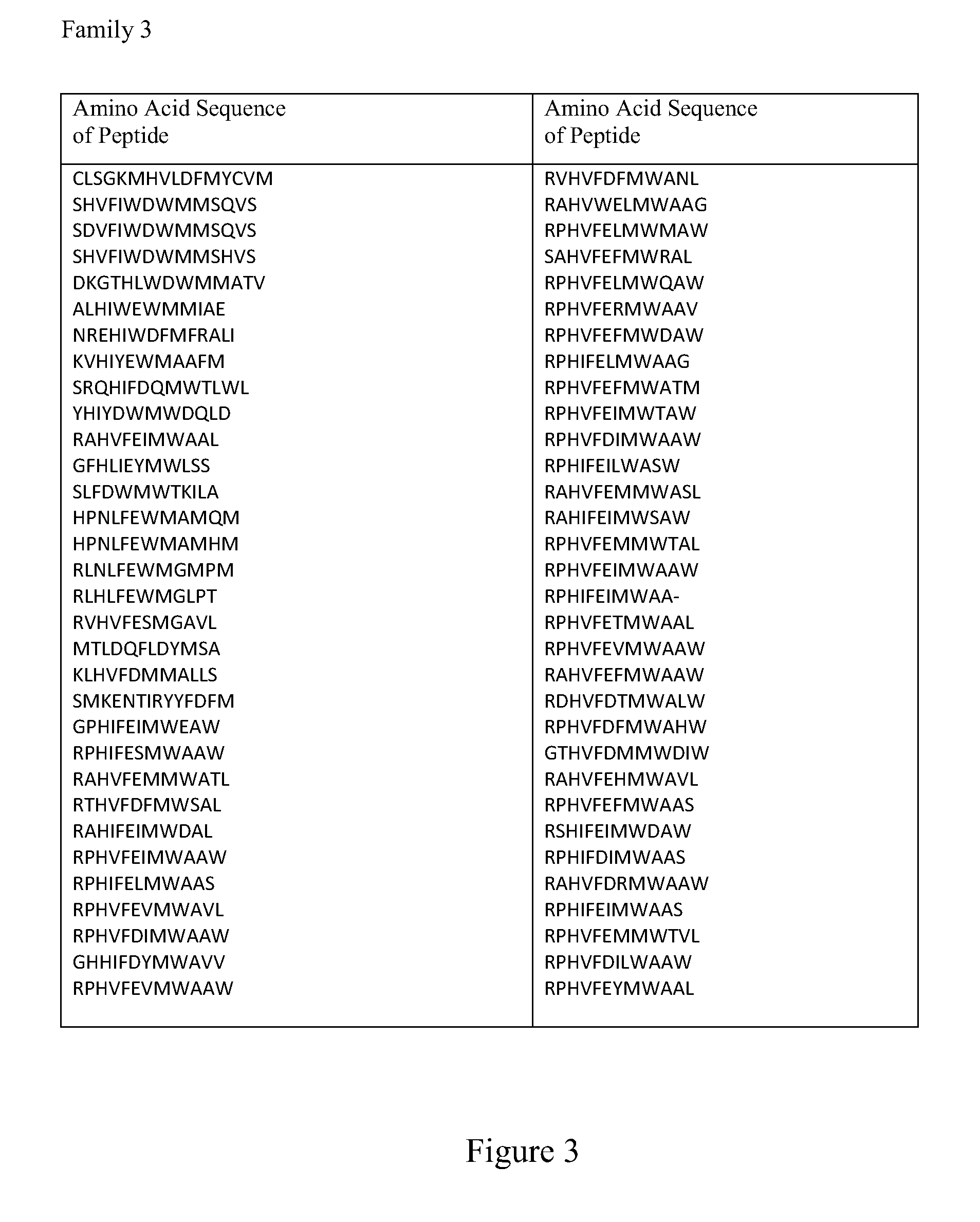METHODS AND COMPOSITIONS FOR MODULATING THE Wnt PATHWAY
- Summary
- Abstract
- Description
- Claims
- Application Information
AI Technical Summary
Benefits of technology
Problems solved by technology
Method used
Image
Examples
example 1
Materials & Methods
[0144]Materials. Highly pure Wnt3a, Wnt9b, Dkk2, Dkk3 and Dkk4 were obtained as carrier-free proteins from R&D Systems (Minneapolis, Minn.) for use in the binding and cell assays. Genens encoding Dkk1, Sclerostin and LRP6 proteins were cloned into a modified pAcGP67 baculovirus DNA transfer vector (BD Pharmingen) for baculovirus generation and extracellular expression in Tni insect cells (Expression Systems, LLC, Woodland Calif.) as previously described (11).
[0145]Protein Expression and Purification.
[0146]All LRP6, Dkk1 and sclerostin proteins used for this study were expressed and purified according to previously described protocols (11). Pure proteins can be then concentrated to 10 μM stocks and stored at −80° C. The anti-LRP6 E1 YW210.09 Fab was expressed by growing transformed E. coli 34B8 (Stratagene) in low-phosphate AP5 medium at 30° C. for 24 h (43) and was purified over a protein G affinity column (GE Healthcare) (44). Fab-containing fractions were furthe...
example 2
Structure of the LRP6 E1-YW210.09 Fab Complex
[0164]The crystal structure of the first β-propeller and EGF domain of LRP6 (E1 domain) in complex with a Fab from the anti-LRP6 antibody YW210.09 (WO2011119661) was determined by molecular replacement and refined to 1.9 Å resolution with an R and Rfree of 0.175 and 0.220 respectively. The crystallographic asymmetric unit is composed of one LRP6 E1 domain and one YW210.09 Fab. Interpretable electron density allowed tracing of the residues Ala20 to Lys324 for the E1 domain. With the exception of Fab heavy chain residues Ser127 to Thr131, residues Asp1 to Glu213 and Glu1 to Lys214 could be traced for the Fab light chain and heavy chain, respectively. (Kabat numbering is used throughout (56)).
[0165]The LRP6 E1 domain is assembled in a modular architecture that comprises a β-propeller module and an epidermal growth factor (EGF) like module. The β-propeller consists of six blades formed by a four-stranded anti-parallel β-sheet arranged radiall...
example 3
YW210.09 H3 Loop Sequence Presents an “NXI” Motif Conserved Among Dkks, Sclerostin and Wise
[0167]The interaction between the distinct CDR H3NAVKN motif and LRP6 E1 β-propeller is highly similar to the interaction reported between laminin and nidogen (60). In both cases, significant contacts are made through the Asn handshake described above and a branched hydrophobic residue entering a hydrophobic cavity formed by the top of β-propeller center channel. In contrast to LDLr, the center of the nidogen and LRP6 E1 channels is closed off from solvent by a tryptophan residue held in place by a nearby phenylalanine side chain, or “Phe shutter” (60). This feature has been proposed to be predictive of YWTD propeller domains that can bind to low molecular-weight ligands (60). A short sequence of human Dkk1 (NAIKN; amino acids 40 to 44) is nearly identical to the motif found in the CDR H3 loop of YW210.09 (FIG. 7). This motif is strictly conserved among multiple Dkk family members from differe...
PUM
| Property | Measurement | Unit |
|---|---|---|
| density | aaaaa | aaaaa |
| bone mass | aaaaa | aaaaa |
| bone-mass density | aaaaa | aaaaa |
Abstract
Description
Claims
Application Information
 Login to View More
Login to View More - R&D
- Intellectual Property
- Life Sciences
- Materials
- Tech Scout
- Unparalleled Data Quality
- Higher Quality Content
- 60% Fewer Hallucinations
Browse by: Latest US Patents, China's latest patents, Technical Efficacy Thesaurus, Application Domain, Technology Topic, Popular Technical Reports.
© 2025 PatSnap. All rights reserved.Legal|Privacy policy|Modern Slavery Act Transparency Statement|Sitemap|About US| Contact US: help@patsnap.com



